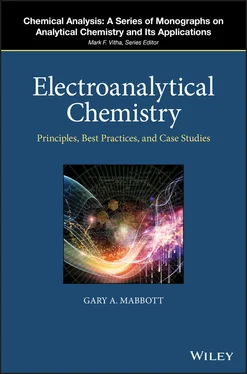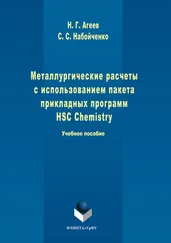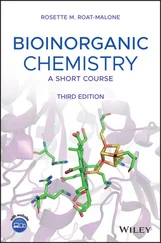One of the growing areas in which electrochemical methods will continue to play an important role is in sensor technology. Electrochemical devices are relatively simple in terms of instrumentation and can be miniaturized. Both of these attributes help keep their costs down and make them candidates for applications such as remote sensors, personal health care monitors, and implantable devices. Some of the newer developments in both ion selective electrodes and voltammetric devices are making these sensors more selective, more robust, applicable to a wider range of analytes, and capable of lower detection limits. As simple as they may be in terms of associated hardware, these devices take advantage of a range of physical and chemical phenomena and are notable intellectual achievements. Advances in this area will require a firm grasp of the underlying science, imagination and hard work, but the possibilities are plentiful.
This book is primarily a textbook for instrumental analysis courses. As an academic subject, instrumental analysis encompasses an enormous field. It is not surprising, then, that university textbooks for instrumental analysis courses are also enormous. No one can expect to cover half of the material contained in them in a single semester. Mark Vitha has initiated a series of monographs as an alternative approach in which instructors can choose only those volumes covering topics that they intend to use in their own classes. The purpose of this book is to provide an option for teaching electroanalytical methods as a part of that series.
Space and instruction time allow for the inclusion of only a fraction of the interesting material in the electroanalytical field here. I have made some compromises in order to make covering the content manageable within a few weeks as well as provide a glimpse at some of the intriguing applications of electrochemical measurements. I have tried to emphasize the conceptual models of physical phenomena and make clear connections to mathematical descriptions that are useful. It is important to see how practicing scientists have used the math to extract useful information about chemical systems. I have tried to guide the reader with an overview of the most important ideas at the beginning of each chapter. Some basic concepts in electrical phenomena are introduced in Chapter 1, and the fundamentals of electrochemical cells are introduced in Chapter 2. Chapter 3describes potentiometry, and Chapter 5lays out the principles of voltammetry. Both Chapters 3and 5include example applications, but Chapters 4and 6provide case studies that demonstrate a lot of the best practices that good chemical analysis depends upon. Chapter 7describes basic electrical circuitry and the use of operational amplifiers that are essential parts of electrochemical instrumentation.
Although this appears to be more material than is easy to cover in a few weeks of a single course, the overview explains which sections to concentrate on, if time is limited. I wanted to let instructors decide on what supporting material and case studies to cover to meet their needs. I hope that students will find the application material engaging. The material should also be relevant to scientists from other fields who need an introduction to the area of electrochemical analysis.
I want to thank Mark Vitha for including me in this project. His energy, insight, and tenacity for getting things done have been an inspiration for me for many years. Several people have read early drafts of various material for this book. I am particularly grateful to Mark, Larry Potts, Maggie Malone‐Povolny, Wayne Boettner, and Joe Brom for their feedback. Each of them has had a different perspective and has made helpful comments. I am also grateful to Phil Bühlmann for his encouragement and insightful comments. I want to thank all the people at Wiley who have helped me in many ways, but Gayathree Sekar deserves special thanks for answering my questions and managing a myriad of things to see this book through production.
Finally, I want to thank my wife, Ann, for all her love and patience. This project would not have been possible without her support and understanding.
Gary A. Mabbott
St. Paul, Minnesota, USA
June 9, 2019
1 Basic Electrical Principles
Electrochemical methods of analysis measure electrical quantities in order to yield chemical information. In some cases, the measurement is an electric current (the movement of charge). In other cases, the measurement is a voltage (the amount of energy available to move a charge). Both of these techniques are useful for quantitative analysis of a chemical species, but they can also be used to determine characteristic properties that are useful for qualitative analysis. Some types of qualitative information can be useful for evaluating new materials, such as catalysts.
In describing the fundamentals of electroanalytical methods, this book emphasizes conceptual models. An effort has been made to tie conceptual models of phenomena to basic mathematical relationships in order to provide a foundation to use in reasoning through new situations. Greater insight into electroanalytical phenomena is the intended result. As with other branches of science, new developments displace older techniques. A fundamental understanding of the phenomena upon which electroanalytical tools operate enables one to appreciate the basis for new techniques and related progress in the field. A conceptual understanding also provides a good starting point for learning about other areas of science and technology that involve electrochemical processes. Electrochemical principles play important roles in many natural phenomena and in modern technology [1]. Among these fields are the subjects of energy storage and conversion; biological processes such as cellular action potentials, tissue repair, and growth [2]; electrochemical synthesis; separation technology, nanoparticles, and materials processing in the electronics industry.
Electroanalytical techniques are among the oldest instrumental methods of chemical analysis. They are still widely used for important analyses and are likely to continue to be important for many more decades. Although electroanalytical chemistry is a mature field in many ways, new developments in the realm of selective sensors and the application of electrochemical methods to demanding tasks, such as in vivo monitoring of neurotransmitters and remote environmental analysis continue to make instrumental analysis based on electrochemistry relevant. Some attributes of electrochemical analysis that lead to special advantages are summarized in Table 1.1.
TABLE 1.1Attributes of electroanalytical techniques
| Attribute |
Makes possible |
| Sensitive |
Low detection limits |
| Small |
In vivo monitoring |
| Measurement in tiny volumes |
| Simple construction |
Implantable devices |
| Inexpensive |
Mass production |
| Use in poor communities |
| Simple operation |
On‐site operation |
| Health care monitoring |
| Remote sensing |
Improved detection limits and greater selectivity have led to a greater range of applications. Some methods are capable of quantifying specific analytes down to the picomolar level. Another appealing attribute of electrochemical sensors is that they are relatively easy to miniaturize making them adaptable to a variety of new situations such as in vivo monitoring [3]. The sensing element can be very small making it possible to measure quantities of chemical species in tiny volumes or in precise locations, such as at the terminus of a single neuron. Electrochemical methods usually require only very simple accessories. That makes them portable and, in some cases, it makes medical implantation of the sensor possible. Sensors can often be made of inexpensive materials that can be mass produced making them attractive for personal healthcare monitors, such as the handheld glucose monitor used by millions of people to manage their diabetes [4]. Other electroanalytical instruments are capable of a wide range of experiments making them well‐suited to studying organic reaction mechanisms associated with electron transfer.
Читать дальше












